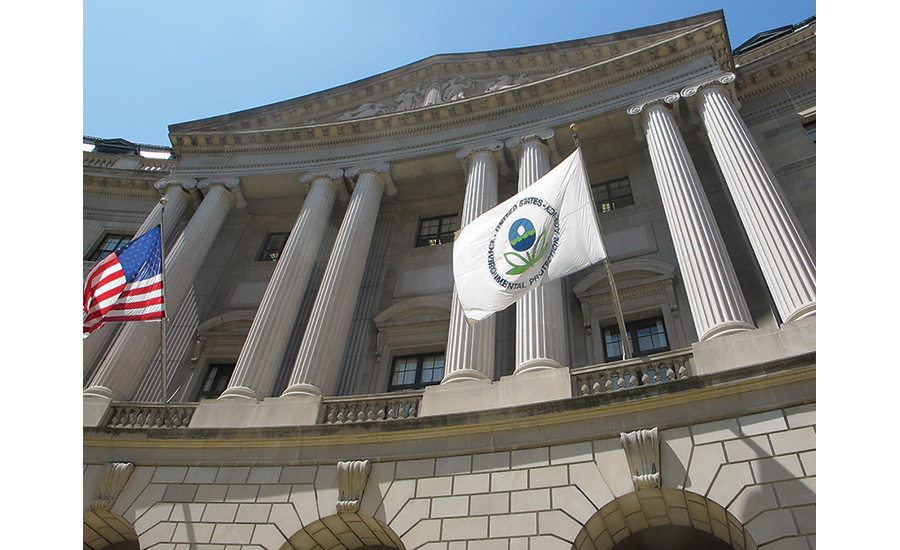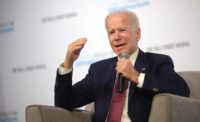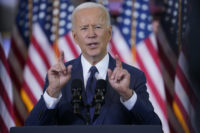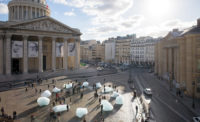President-elect Donald Trump and some of his cabinet nominees—including Rick Perry at the Department of Energy and Scott Pruitt at the Environmental Protection Agency–have rejected the mainstream science on climate change and vowed to roll back environmental rules like the EPA’s Clean Power Plan. This has architects worried that Trump’s administration could reverse other regulations, including those relating to green buildings.
Trump railed against green office buildings specifically in a 2012 interview on CNBC’s Squawk Box, saying they were “green because they don’t give you enough energy.” Only a couple of the properties associated with his name, such as the new Trump International Hotel in Washington, D.C., have sought LEED certification, according to a directory kept by the United States Green Building Council.
Todd Myers, the director of the Center for the Environment at the Washington Policy Center, who has fought green building standards for schools, sees the election as an opportunity for the federal government to do away with regulations like the General Services Administration’s requirement of LEED certification for federal facilities. “The current administration has wanted to look green. The problem is, looking green and being green are two different things,” Myers says. “If the Trump administration only cares about results, we may actually do better at creating energyefficient buildings, because they will go with what works rather than earning plaques,” he says, referring to the USGBC emblems displayed in LEED-certified buildings.
Federal buildings have been seen as leaders in energy-efficient retrofits and new green construction—but that could change. Trump has vowed to rescind many of President Barack Obama’s executive orders, which could include the one signed in February 2015 requiring that federal buildings cut energy use by 2.5 percent each year through 2025.
Regardless of what action Trump takes with his predecessor’s executive orders, the GSA would still be required by the Energy Independence and Security Act of 2007 to follow general sustainable-building principles (the agency updates its requirements in a yearly policy document). Pruitt, whose record of suing the agency he may soon lead has worried environmentalists, could not singlehandedly revoke GSA’s LEED-certification requirement. The EPA does have several discretionary programs that seek to facilitate green building, like Water Sense, Energy Star, and Portfolio Manager, that “may receive some scrutiny or be impacted under the new administration,” says Taryn Holowka, the senior vice president of Marketing, Communications and Advocacy at USGBC.
Department of Energy efficiency standards have also become a target, with the House Freedom Caucus asking the Trump administration in mid-December to scrap a slew of new rules for household appliances. But Holowka says she is confident that green-building policy will remain a bipartisan issue and that the private sector would continue to seek out sustainable and energy-efficient buildings.
The vast majority of policies that could affect green building, from incentives to energy codes to building codes, is set at the local level, according to Russel Unger, the executive director of the Urban Green Council in New York. “When you drill down to any individual city, whoever’s in federal office doesn’t affect the industry that much,” he says. “There’s tremendous innovation going on, and a lot is driven just because the market and owners want to make a better building than the last one, and [this innovating] is grounded by a suite of local laws and state programs.”
The belief in the power of individual cities to shape environmental policy was borne out by the mayors of 90 of the world’s leading megacities. In December, at a conference sponsored by the organization C40 Cities, held in Mexico City, they vowed to redouble their efforts to cut greenhouse-gas emissions. The mayors identified buildings as the sector with the most cuts to offer, primarily through building data reporting, new energy codes, and municipal and commercial building retrofits.





Post a comment to this article
Report Abusive Comment